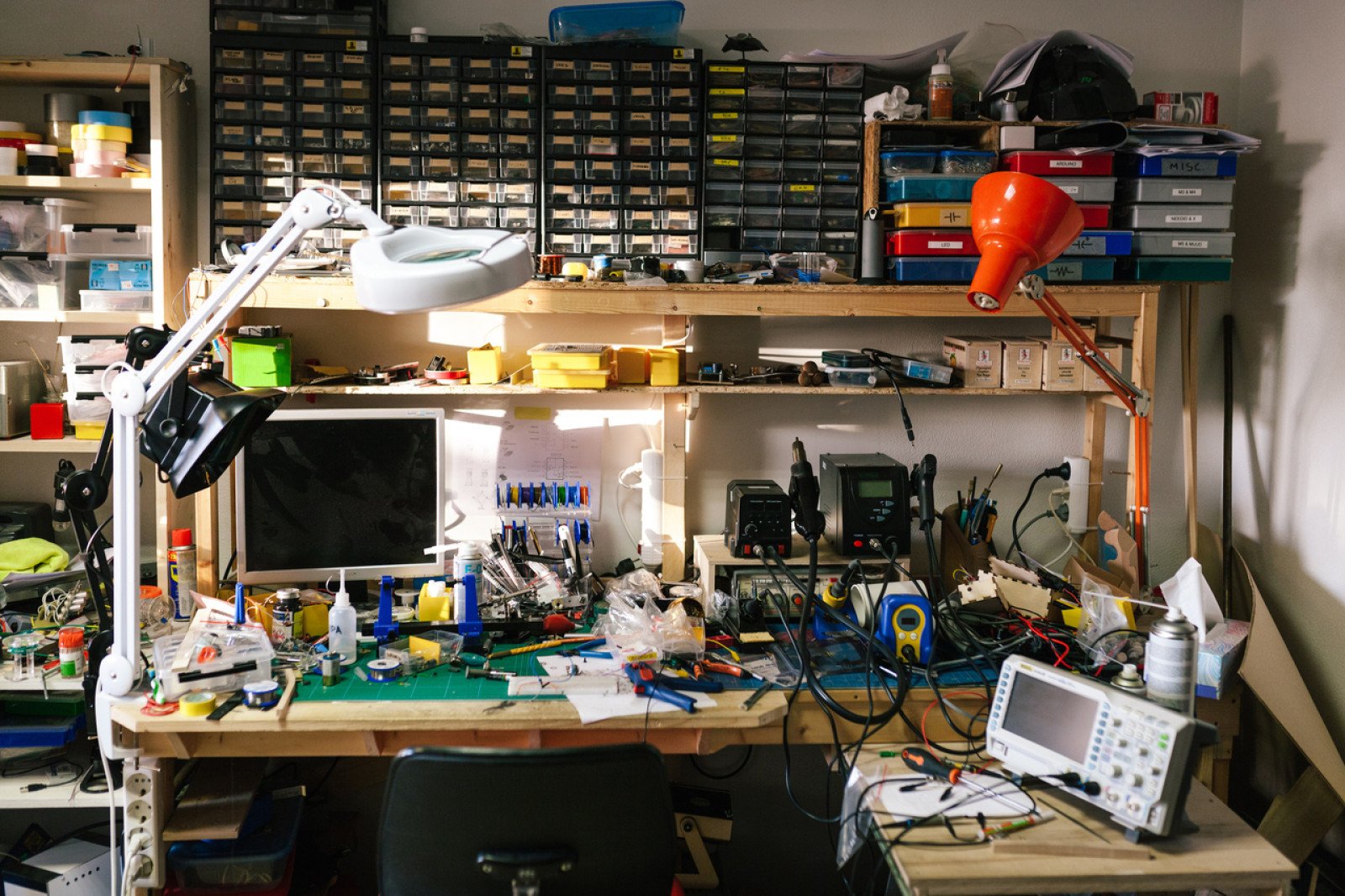Energy inventions
How many inventions can you name that use energy? Build a timeline to see how our energy use has increased over time.

Overview
Brainstorm inventions that use energy. Choose one to research and create a timeline of energy inventions. In a talking circle, reflect on the impacts of increased use of energy on the environment.
Instructions
What you'll need
- Laptops or computers for research
- “Energy inventions” worksheet
- Strips of paper
- String
- Tape
Energy inventions brainstorm
- Give each student the “Energy inventions” worksheet.
- Give two to three minutes to brainstorm inventions, devices, appliances or tools that use energy and write them down on the worksheet.
- Share ideas as a class and write them on the board.
A timeline of energy inventions
- We’re going to build an energy timeline. Look at the list of inventions and have each student, or pair of students, choose one to research. See “Energy inventions” timeline in the Teaching notes section for more ideas if necessary.
- Students research when their item was invented. Have them find and record three sources on the worksheet.
- Ask students to write the name of the invention and the year it was invented on a strip of paper.
- Hang up a string along a wall of the classroom. One end represents “present” and the other end the “past.”
- Have students tape their strips of paper along the string in chronological order to create a timeline of energy inventions. Debrief:
- What do they notice about the timeline? The more things that are invented and the more people buy and use them, the more demand there is for energy.
Talking circle
- Form a talking circle. See Teaching notes for more information about talking circles.
- The Indigenous tradition of a talking circle is used as a way to share ideas where everyone can see and listen to each other.
- The circle also represents the Indigenous perspective that all living things, including humans, are interconnected and none are more important than the other.
- This perspective connects well to a discussion about how our energy use affects the environment and living things.
- In the circle, explore the following questions with students:
- How does our use of energy impact the environment?
- How has our use of energy changed over time?
- Do some inventions and devices have more impact on the environment than others? Why or why not?
Modify or extend this activity
- In B.C. most of our electricity is made using the power of falling water (hydroelectricity). Hydroelectricity and other renewable energy sources have less impact on the environment than non-renewable energy sources.
- Have students pick a province in Canada or another country to research how they produce electricity and share their findings.
Curriculum Fit
Grade 7 Science
Big idea
- Earth and its climate have changed over geological time.
Content
- Evidence of climate change over geological time and the recent impact of humans
Curricular competencies
Questioning and predicting
- Demonstrate a sustained intellectual curiosity about a scientific topic or problem of personal interest
- Identify a question to answer or problem to solve through inquiry
Processing and analyzing data and information
- Construct and use a range of methods to represent patterns or relationships in data, including tables, graphs, keys, models, and digital technologies as appropriate
- Use scientific understandings to identify relationships and draw conclusions
Evaluating
- Consider social, ethical, and environmental implications of the findings from their own and others’ investigations
Applying and innovating
- Transfer and apply learning to new situations
Communicating
- Communicate ideas, findings and solutions to problems
Assessments
- Use the worksheet, and circulate during the activity, to assess student ability to generate ideas during the brainstorm.
- Assess ability to communicate ideas and listen actively during the brainstorm and talking circle.
- Assess student ability to research and evaluate online sources using the worksheet.
- During the talking circle, assess student understanding of the impacts on the environment of our increasing energy use.
Teaching Notes
Energy inventions timeline
Note: Dates listed are approximate. Technologies evolve and change from the original design to patent to production to mass market use. The purpose of the activity is for students to see and understand that humans are constantly inventing and creating new technologies, appliances and machines that use energy and electricity. More things = more need for energy.
- 1879: Incandescent light bulb
- 1886: Gas-powered car
- 1896: Electric stove
- 1905: Toaster
- 1907: Vacuum
- 1920s: Refrigerator
- 1927: TV
- 1930s: Washing machine
- 1935: Clothes dryer
- 1939: Jet plane
- 1960: Electric toothbrush
- 1962: LED bulbs
- 1972: Video game console
- 1975: Desktop computer
- 1976: Videocassette recorder (VCR)
- 1979: Portable cassette tape player (Walkman)
- 1983: Cell phone
- 1990s: Laptop
- 1995: Modern day CFL bulbs
- 1996: DVD player
- 1997: MP3 player
- 1997: Wifi
- 1999: Blackberry
- 2001: Personal video recorder (PVR)
- 2003: Tesla electric vehicle
- 2008: iPhone
- 2008: Smart TV
- 2019: Commercial electric plane
Evaluating online sources
When researching online, students need to evaluate their sources. Some key points to review as necessary:
- Who wrote the information? Are they qualified to write about it? Are they being influenced by anyone?
- When was the information written? Is it recent?
- Fact or opinion. Is the information fact or opinion? Is it biased? Is it accurate?
As well, when researching a date for when something was invented, students may come across conflicting dates. Discuss why this may be, including technologies evolving and changing from the first original design to patent to production to mass market introduction and use.
Energy demand for the future
Demand for energy is growing. Transportation, heating, cooling, appliances and more all need energy sources. When we use energy and resources we impact the environment including the plants, animals, water and air. In 20 years, B.C.’s demand for electricity is forecast to increase 40 to 60 per cent over what we use today. That’s like powering five additional cities the size of Vancouver each year.
Conservation and energy-efficiency are two ways to reduce our energy demand and impact on the environment. Energy conservation and being smart with the way we use energy reduces our demand for electricity and plays a key role in meeting our future energy needs. Zero-emission vehicles, energy-efficient products and choosing renewable energy sources are just a few ways that we can reduce the impact of our energy use on the environment. Most electricity in B.C. is generated from a clean and renewable source: water. Wind, biomass, solar and geothermal energy sources are also being explored in B.C.
Learn ways to save energy with lighting in this video.
Talking circles
Talking circles are important in Indigenous cultures as part of the oral tradition and as a way to share thoughts and ideas. The purpose of the talking circle in this activity is to provide an opportunity for students to share their thoughts and ideas about the impact of energy use in a circle, where everyone can see and listen to each other. The circle represents the Indigenous perspective that all living things, including humans, are interconnected and none are more important than the other. This is relevant to a discussion about the impact of our energy use on the environment and living things.
A talking stick or special object is passed around the circle and is used as a communication tool. Whoever is holding the stick can speak and share their ideas without interruption while others in the circle listen respectfully. Everyone is encouraged to share, but students may choose to skip their turn if they wish. When speaking, students are encouraged to use “I”-statements and share their own thoughts and ideas.
First Nations Education Steering Committee (FNESC) recommends visiting First Nations Pedagogy Online to learn more about using sharing or talking circles.







